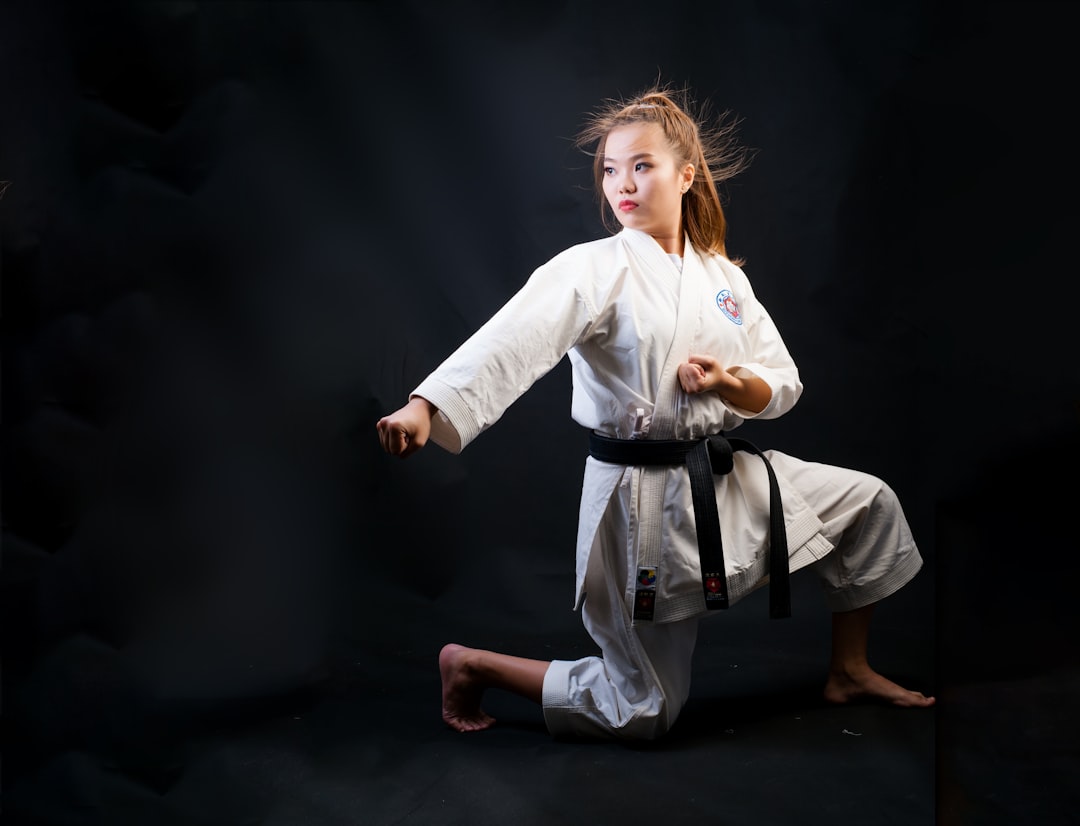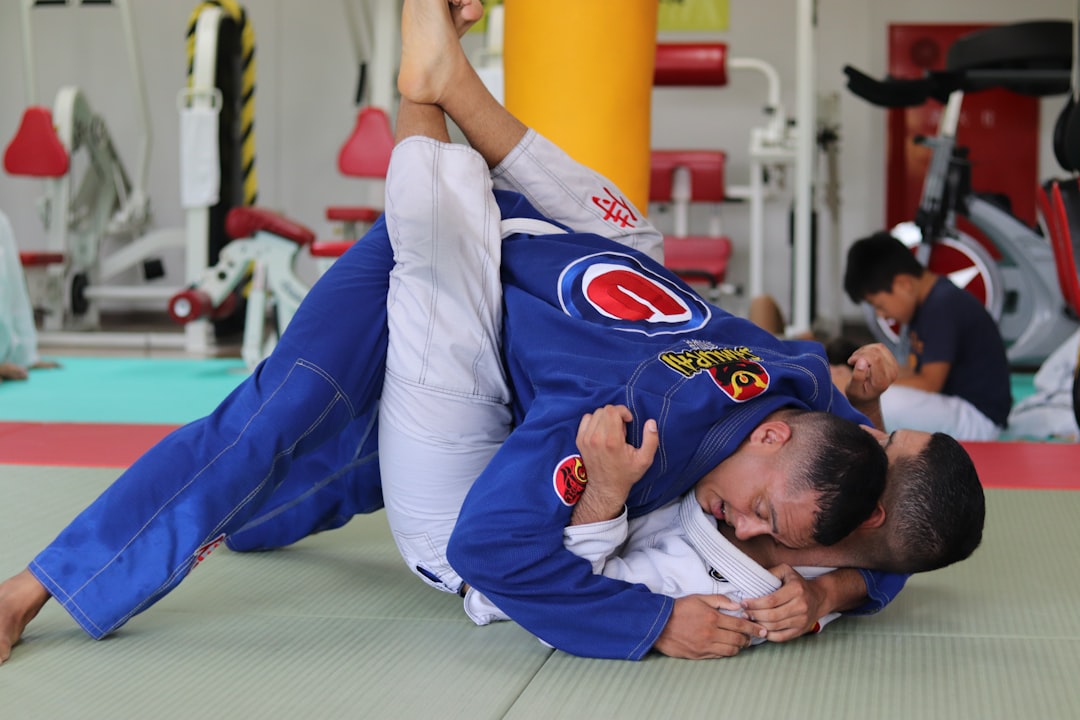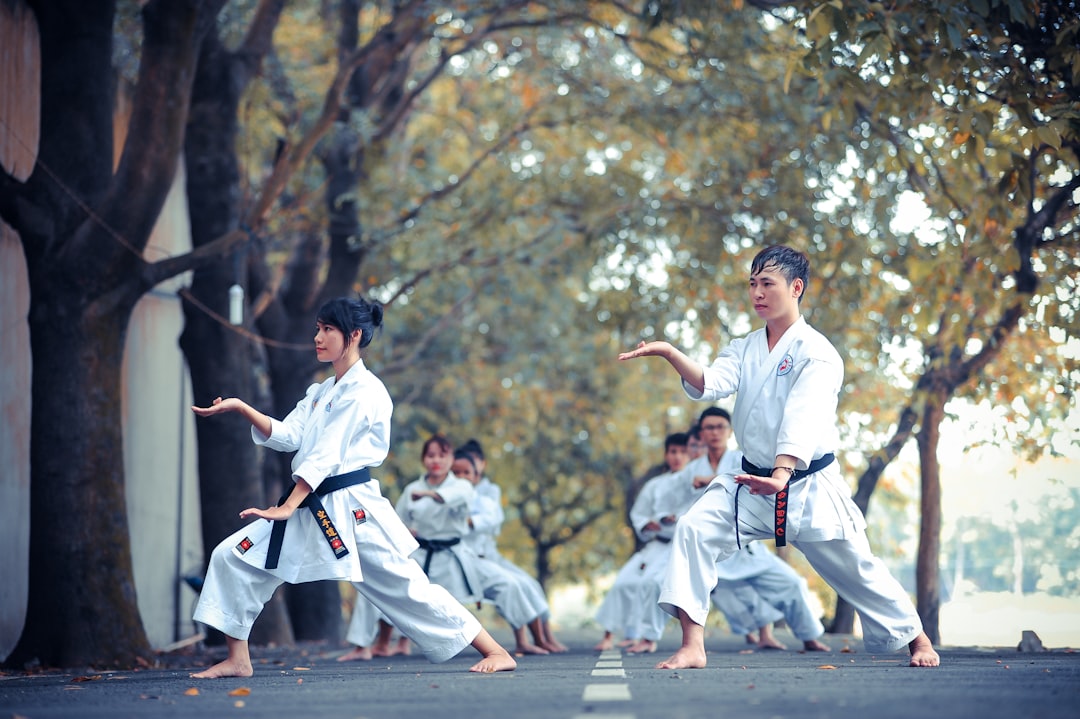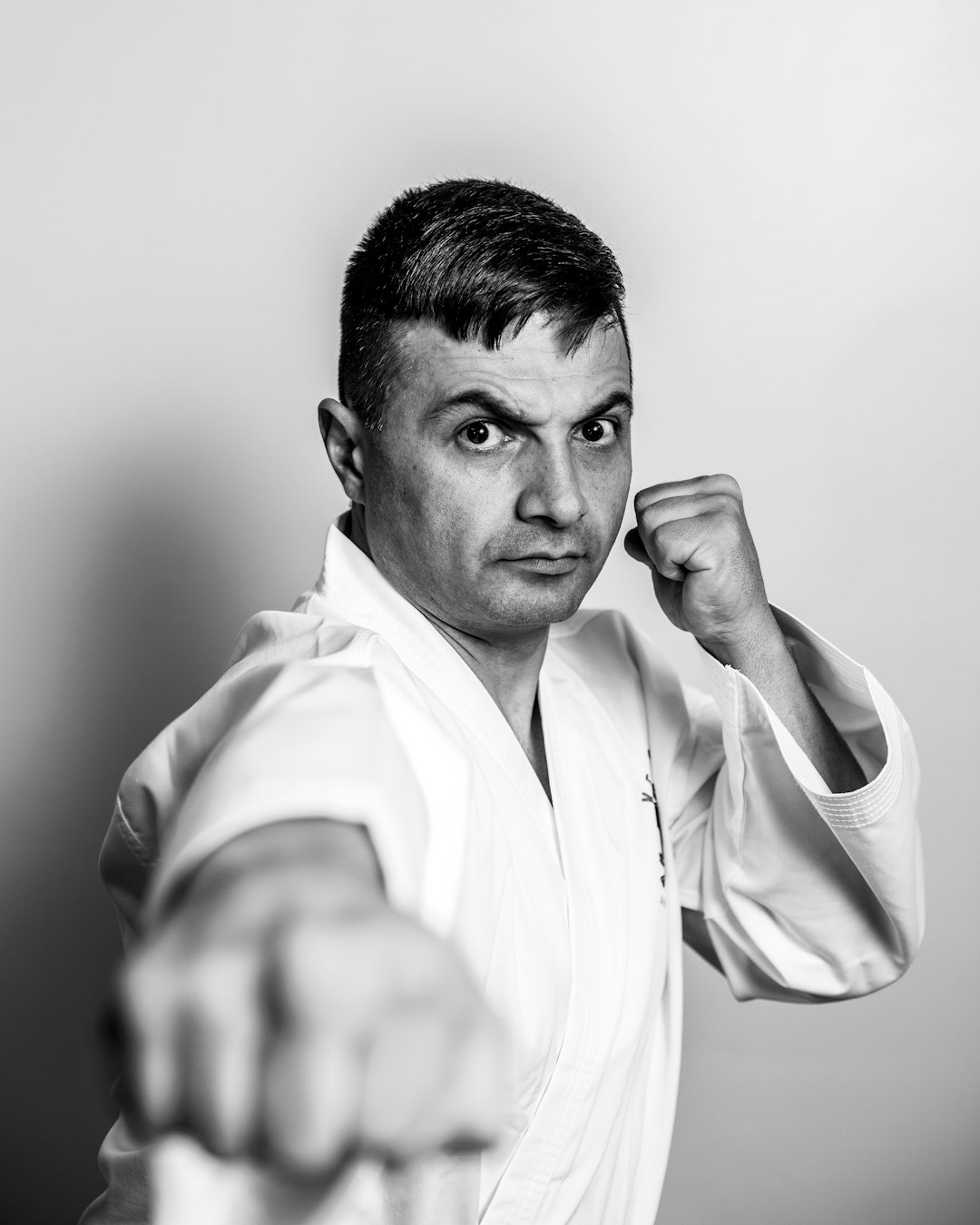The karate gi is a multifunctional uniform essential for both the ceremonial respect and the practical demands of karate training. It's made from durable cotton or hemp fabric to offer breathability, durability, and absorbency. The traditional white gi signifies higher ranks, while darker colors indicate lower ones. The design of the gi, including its jacket with mid-forearm sleeves and straight-leg trousers extending just above the ankle, is intentional for unrestricted movement during techniques. Selecting the right material between cotton and polyester depends on personal preference, training intensity, and climate conditions. A well-fitted gi optimizes performance and shows respect to karate's tradition. Personalization options like colors, patches, embroidery, and logos allow practitioners to express their rank, school affiliation, or personal preferences. Proper care through gentle machine washing, air drying, and ironing on reverse side with medium heat are necessary to maintain the gi's condition. Regular inspections for wear and tear ensure the gi remains a symbol of respect and unity within the karate community.
When stepping onto the mat for a karate practice or competition, the attire donned by practitioners is both a uniform and a statement of discipline and respect. Often referred to as a ‘karate gi,’ this garment is central to the martial art’s tradition and functionality. This article delves into the essential aspects of karate attire, exploring its material, design, and purpose, alongside practical advice for choosing, customizing, and maintaining your own karate gi. Whether you are a novice or an expert, understanding the significance of this uniform is key to embracing the full karate experience.
- Understanding the Essentials of Karate Attire: The Gi's Role
- The Anatomy of a Karate Gi: Material, Design, and Purpose
- Choosing Your Karate Gi: Factors to Consider for Beginners and Experts Alike
- Customizing Your Karate Gi: Personalization Options for Martial Artists
- Maintaining and Respecting Your Karate Gi: Care and Upkeep Tips
Understanding the Essentials of Karate Attire: The Gi's Role

When engaging in the practice of karate, one essential piece of equipment is the gi, which is the traditional uniform worn by practitioners. A karate outfit called a gi is not merely a garment but a symbol of respect and discipline within the martial art. The gi serves several functions beyond its ceremonial importance; it allows for movement during practice, provides a standardized appearance that signifies unity among practitioners, and facilitates learning by offering a visual cue for correct stances and movements. Crafted from cotton or hemp, the gi typically consists of a jacket, trousers, and belt, each element designed to offer both functionality and formality appropriate for the martial art. Is the gi only significant for ceremonial purposes, or does it play a practical role in the practice of karate? The gi indeed serves a practical purpose: it is durable enough to withstand the rigors of training, allows for ease of movement during practice, and contributes to a standardized look that fosters a sense of community among practitioners. Furthermore, the loose fit of the garment enables instructors to observe students’ postures and techniques accurately, ensuring proper form and execution.
The Anatomy of a Karate Gi: Material, Design, and Purpose

When practitioners of karate engage in their disciplined practices, they adorn themselves with a distinctive uniform known as a karate gi. This traditional garment serves not only as a uniform but also as a symbol of respect and humility within the martial arts community. The gi is typically made from a sturdy cotton material that allows for ease of movement during various techniques and forms. The design of the gi, which includes a jacket, trousers, and often a belt, or obi, is standardized to provide functionality and simplicity that aligns with the principles of karate.
The top half of the gi, also known as the jacket or uwa-gi, is constructed with a set of sleeves that reach mid-forearm length, offering enough flexibility for practitioners to execute arm blocks and strikes without restriction. The trousers, known as the nagi, are straight-legged and extend to just above the ankle, allowing for unobstructed mobility in the lower extremities. Additionally, the jacket and trousers are connected by the obi, a wide belt that ties at the back, securing the garment in place during practice or competition. The color of the gi can vary, often representing the rank of the karateka; white is typically associated with higher belts, while darker hues may be worn by lower-ranked practitioners. Does the material of the gi impact the performance of the martial artist? Yes, the cotton material is chosen for its breathability and durability, which contributes to the comfort and effectiveness of the martial artist’s movements. Is the design of the karate gi purposeful in terms of its function within the practice? Absolutely, every aspect of the gi’s design is intentional, from the material selection to the specific cut, all contributing to a conducive environment for training.
Choosing Your Karate Gi: Factors to Consider for Beginners and Experts Alike

When selecting a karate gi, whether you’re a beginner or an experienced practitioner, several factors are crucial to ensure both comfort and respect for the martial art tradition. Firstly, consider the materials from which the gi is made; traditional karate gis are typically constructed with cotton or hemp for durability and breathability, which are ideal for absorbing sweat and providing a suitable level of mobility during practice. Are cotton or polyester gis better for your training intensity and climate? Cotton gis are often preferred for their natural fibers that allow for optimal comfort and longevity, while polyester gis may offer more stretch and resistance to odors and stains.
Additionally, the fit of the gi is paramount. It should not be too tight, as this can restrict movement, nor too loose, as it may hinder your ability to execute techniques properly. Are you aware of how a well-fitting gi enhances performance? A correctly sized gi allows for a full range of motion, enabling you to practice with the correct form and precision. The jacket should be long enough to tuck in completely when belted, and the pants should stay up without the need for excessive tightness or additional belts. By taking these factors into account, both beginners and experts can find a karate outfit that not only meets their needs but also honors the tradition and discipline of this esteemed martial art.
Customizing Your Karate Gi: Personalization Options for Martial Artists

When practicing the disciplined art of karate, donning the appropriate attire is crucial to both performance and respect for the tradition. A karate outfit, often referred to as a gi, serves as a blank canvas for personal expression and adherence to the martial arts code. Personalization options for martial artists abound, allowing each individual to customize their gi according to their style, rank, and preferences. Do you seek to make your gi unique? Consider the variety of colors available, which can signify different schools or ranks within karate. Are you a high-ranking practitioner? You might opt for a black gi, symbolizing your advanced status. Additionally, personalization extends to the choice of fabric; whether you prefer cotton for its breathability and comfort or a polyester blend for durability and ease of care, there’s an option to suit your needs. Gis can also be personalized with patches, embroidery, or your dojo’s logo, further setting your uniform apart from others. Do you aim to represent your dojo or honor a mentor? Such customizations not only serve as a visual testament to your dedication but also foster a sense of community and shared identity among practitioners. Tailors specializing in martial arts apparel can alter the fit, ensuring your gi is both functional for sparring and respectful during formal events. Whether you’re a beginner or an experienced martial artist, customizing your karate outfit calls ki (energy) and pride with each movement, reflecting your journey within this profound discipline.
Maintaining and Respecting Your Karate Gi: Care and Upkeep Tips

When engaging in the disciplined practice of karate, the attire you wear is as significant as the techniques you perform. The traditional karate outfit, known as a gi, not only signifies respect for the martial art but also serves as a uniform that unites practitioners worldwide. To maintain the integrity and appearance of your karate gi, it’s crucial to follow specific care and upkeep protocols. Firstly, always read the manufacturer’s care label before cleaning. Typically, machine washing is permitted, using a gentle cycle with a mild detergent. Are your gi’s buttons plastic or metal? This detail influences whether you should opt for a laundry bag during the wash to protect them from snagging. After washing, air drying flat is recommended to prevent shrinkage and maintain the gi’s shape and size. Ironing on the wrong side with a medium heat setting can restore creases without damaging the cotton fabric. Regularly inspecting your gi for any signs of wear or fraying ensures it remains in good condition, reflecting both personal pride and respect for the tradition of karate.
In conclusion, when referring to the attire donned by practitioners of karate, the term “karate outfit” or “karate gi” is most appropriate. This article has delved into the multifaceted aspects of a karate gi, from its purpose and design to selecting and personalizing one that reflects the wearer’s skill level and personal style. It is not merely a uniform but a symbol of respect, tradition, and discipline within the martial art. Proper care and maintenance ensure that the gi remains a faithful companion throughout a practitioner’s karate journey. Whether you are a novice or an expert, understanding the significance of your karate outfit goes beyond aesthetics; it is a nod to the rich history and culture from which karate originates.
